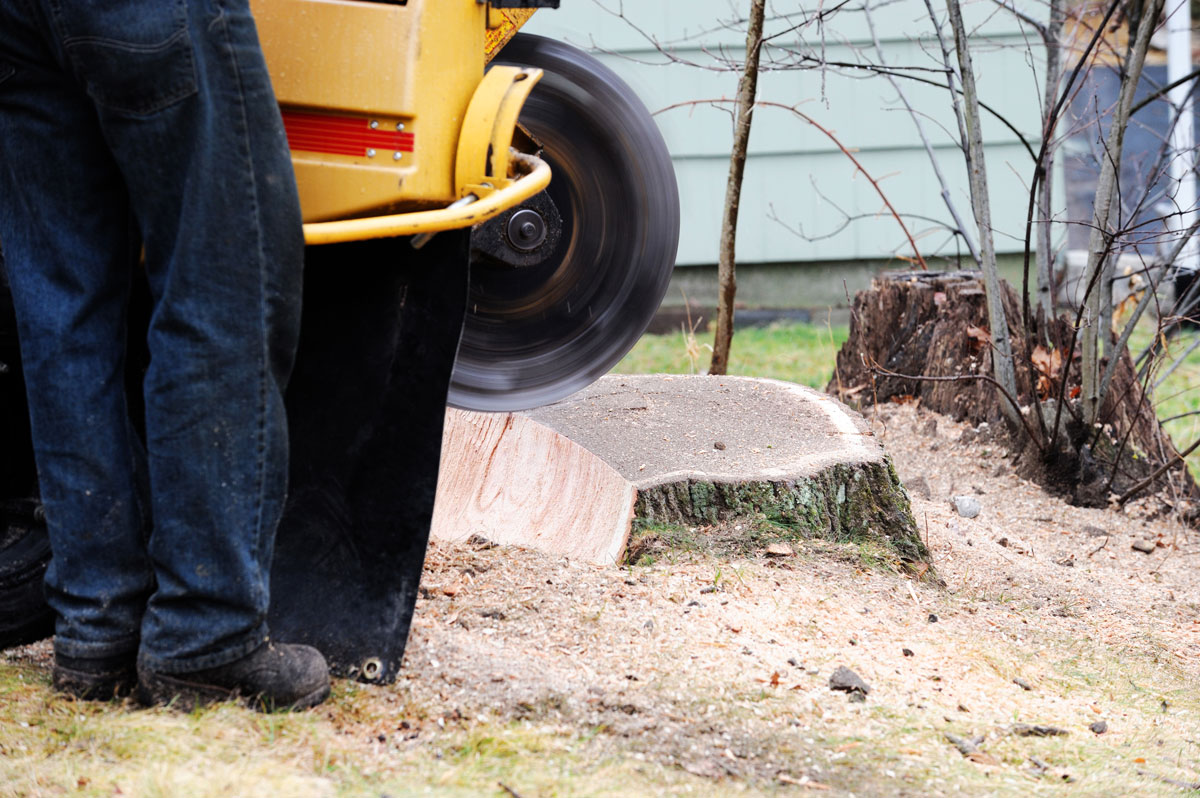Tree removal is often the first solution that comes to mind when dealing with unwanted or hazardous trees. However, once a tree is felled, the remnants of its existence—the stump—remain. These stumps can be unsightly, obstructive, and even hazardous. Removing them efficiently and effectively requires a comprehensive understanding of the process, tools, and techniques involved. In this guide, we delve into the intricacies of tree stump removal, offering insights and expertise to master this essential aspect of arboriculture.
Understanding Tree Stumps
Before delving into the removal process, it’s crucial to understand the anatomy of a tree stump. When a tree is cut down, its roots and a portion of the trunk remain embedded in the ground, forming the stump. Stumps vary in size, depending on the tree’s species, age, and the method of removal. Some stumps may protrude prominently from the ground, while others may be partially buried, complicating the removal process.
Aside from being eyesores, tree stumps pose several challenges. They can hinder landscaping efforts, obstruct construction projects, and even become breeding grounds for pests and fungi. Moreover, they can pose tripping hazards, especially in areas frequented by pedestrians or vehicles. Consequently, removing tree stumps is often necessary to enhance safety, aesthetics, and functionality.
Tools and Equipment for Tree Stump Removal
Successfully removing a tree stump requires the right tools and equipment. While manual methods exist, they are often labor-intensive and time-consuming. For efficient stump removal, power tools and machinery are indispensable. Here are some essential tools and equipment commonly used in the process:
Stump Grinder
A stump grinder is perhaps the most efficient tool for removing tree stumps. It features a rotating cutting wheel with carbide teeth that grind the stump into small wood chips. Stump grinders come in various sizes, from handheld models suitable for small stumps to self-propelled machines capable of tackling large stumps with ease.
Chainsaw
Chainsaws are useful for cutting down any remaining portions of the tree trunk protruding from the stump. They can also be used to make strategic cuts to facilitate stump grinding or removal.
Digging Tools
Shovels, mattocks, and pickaxes are essential for excavating soil around the stump and exposing its roots. This step is crucial for loosening the stump and creating space for the stump grinder or other removal equipment.
Safety Gear
Personal protective equipment, including gloves, goggles, ear protection, and sturdy footwear, is essential when operating power tools and machinery. Additionally, wearing protective clothing can help prevent injuries from flying debris and sharp objects.
The Stump Removal Process
The process of removing a tree stump typically involves several sequential steps, each crucial for achieving optimal results. While the exact method may vary depending on factors such as stump size, location, and accessibility, the following steps provide a general overview of the process:
Assessment and Preparation
Before beginning the removal process, assess the stump’s size, condition, and surrounding environment. Consider factors such as nearby structures, underground utilities, and the presence of rocks or debris. Clear the area around the stump and remove any obstacles that may impede the removal process.
Cutting the Stump
If any portions of the tree trunk remain above ground level, use a chainsaw to cut them as close to the ground as possible. This step reduces the workload for the stump grinder and ensures a smoother removal process.
Exposing the Roots
Use digging tools to excavate soil around the base of the stump, exposing its roots. Begin by clearing away surface debris and gradually work your way around the stump, digging deeper as needed. Be cautious not to damage surrounding vegetation or underground utilities.
Operating the Stump Grinder
Once the roots are exposed, position the stump grinder adjacent to the stump. Adjust the grinder’s height and angle to ensure optimal contact with the stump. Start the grinder and gradually lower the cutting wheel onto the stump, moving it back and forth to grind the wood into small chips. Continue grinding until the entire stump is reduced to below ground level.
Backfilling and Cleanup
After grinding the stump, fill the resulting hole with soil or mulch to level the ground surface. Tamp down the backfill material to compact it and prevent settling. Remove any remaining debris, such as wood chips or rocks, from the area, leaving it clean and tidy.
Disposal of Debris
Depending on local regulations and personal preferences, dispose of the stump debris appropriately. Wood chips can be used as mulch or composted, while larger pieces of wood may be recycled or disposed of at a designated facility.
Tips for Success
Achieving successful tree stump removal requires careful planning, proper technique, and attention to detail. Here are some additional tips to ensure a smooth and efficient removal process:
- Choose the right equipment for the job, taking into account the size and condition of the stump.
- Always follow safety protocols when operating power tools and machinery.
- Take breaks as needed to prevent fatigue and maintain focus throughout the removal process.
- Consider seeking professional assistance for larger stumps or challenging removal scenarios.
- Monitor the area for regrowth or residual roots that may require further treatment or removal.
Conclusion
Mastering the process of tree stump removal is essential for maintaining safe, functional, and aesthetically pleasing outdoor spaces. By understanding the anatomy of tree stumps, acquiring the necessary tools and equipment, and following a systematic removal process, homeowners and arborists can effectively eliminate unsightly stumps from their landscapes. Whether tackling small residential stumps or large commercial projects, attention to detail, proper technique, and a commitment to safety are key to achieving successful stump removal outcomes.

